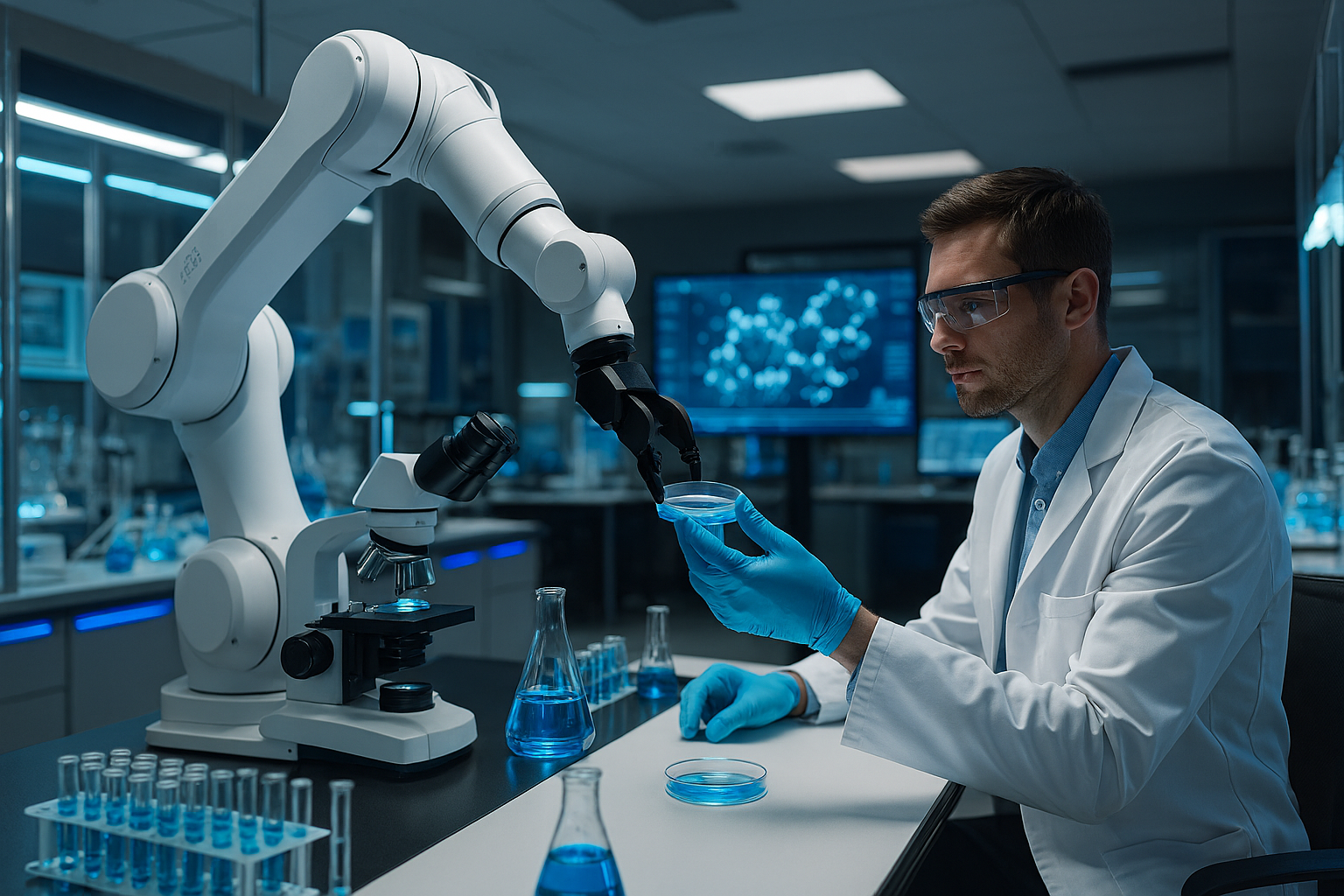The consumer-packaged goods industry is transforming as sustainability becomes a priority for consumers and companies. Green product development is at the forefront of this transformation, with a PDI Technologies study showing that 80% of consumers are concerned about a product’s environmental impact. Moreover, products marketed as sustainable are growing 2.7 times faster than conventional goods, driving one-third of CPG growth, according to NYU research.
This shift highlights the demand for environmentally conscious products, emphasizing the importance of green product development that aligns with consumer values. This presents challenges and opportunities for companies to lead in sustainable innovation. Organizations focus on resource efficiency, transparency, and Life Cycle Assessments (LCAs) to track a product’s environmental impact from extraction to disposal, identifying ways to reduce footprints and make impactful changes.
Read More about our latest blog post on reducing emissions through R&D in consumer goods.
The Role of R&D in Green Product Development
The primary role of R&D is to develop new products, improve existing ones, and ensure that processes are efficient and cost-effective. In green product development, these responsibilities include designing environmentally friendly products throughout their life cycles, from raw material sourcing to end-of-life disposal. R&D is tasked with identifying and testing new materials, manufacturing methods, and technologies that align with sustainability goals. This involves constant experimentation, prototyping, and collaborating across the supply chain to develop viable solutions.
a) Sustainability Shift: A New Focus in R&D
Over the past decade, sustainability has become a core priority within R&D departments. Consumer demand for eco-friendly products has pushed companies to rethink how they design, source, and manufacture goods. According to a McKinsey report, new generations like Gen Z are shaping market trends, with 83% preferring brands committed to sustainability. This generation is willing to pay a premium for eco-friendly products, with 70% of consumers ready to invest more. Consequently, businesses are increasingly driven to prioritize sustainability in their product development efforts. Sustainability in R&D covers multiple aspects:
- Material Sourcing
- Energy Efficiency
- Circularity
b) Innovation in Materials
Breakthroughs in materials are at the heart of sustainable R&D efforts. Some notable innovations include:
- Biodegradable Materials: Companies are developing alternatives to traditional plastics, such as plant-based polymers that decompose naturally, reducing waste and pollution. An example is PLA (polylactic acid), derived from corn starch and used in packaging.
- Recycled Plastics: Brands are incorporating post-consumer recycled (PCR) plastics into their products to lower reliance on virgin materials. This innovation reduces the demand for fossil fuel-based plastics and diverts waste from landfills.
- Eco-friendly Packaging: Packaging innovation is another crucial area. Companies are investing in minimalist designs, reducing packaging materials, and using compostable or biodegradable options. For instance, companies like Coca-Cola piloted 100% recyclable bottle designs made from renewable materials.
These innovations align with sustainability goals and meet rising regulatory standards and consumer expectations. As R&D departments focus on sustainable materials and processes, they pave the way for the future of green product development in the consumer goods industry.
The Importance of Data in Measuring Environmental Impact
a) Collecting Accurate Data: A Critical First Step
To create truly sustainable products, companies must understand the environmental impact of their operations. This involves collecting accurate and comprehensive data on everything from raw material extraction to manufacturing processes, distribution, and even end-of-life disposal. Without reliable data, gauging the effectiveness of sustainability initiatives or identifying areas for improvement is impossible. Gathering this information allows businesses to comply with environmental regulations and transparently communicate their efforts to stakeholders and consumers, which is increasingly important in today’s market.
Understanding a product’s entire life cycle in consumer goods industries often requires data on resource use, emissions, waste production, energy consumption, and more. High-quality data ensures that sustainability claims are backed up, helping companies avoid issues like greenwashing, which can harm brand reputation and trust.
b) Life Cycle Assessments (LCAs)
The Life Cycle Assessment is one of the most comprehensive tools for measuring environmental impact. An LCA evaluates the environmental effects of all stages of a product’s life, from resource extraction (cradle) to end-of-life disposal (grave). This includes assessing raw materials, energy use, emissions, and waste from production, transportation, usage, and disposal.
LCAs offer a complete picture of a product’s environmental footprint, helping companies identify the stages where the most significant impacts occur. By doing so, businesses can make informed decisions about which areas to prioritize in their green product development efforts—using recycled materials, improving manufacturing efficiency, or optimizing packaging for recyclability. For example, companies like Procter & Gamble and Nestlé have successfully used LCAs to reduce carbon emissions and minimize waste across their supply chains.
c) Opportunities for Action: Identifying Areas of Improvement
The data from LCAs can help companies identify areas for meaningful changes, such as switching to renewable energy, sourcing sustainable materials, and reducing packaging. This understanding can also drive innovation in areas like waste recycling and sustainable transportation. By using LCAs, companies can minimize their environmental impact and meet evolving consumer expectations for eco-friendly products.
Case Study: PepsiCo’s Commitment to Sustainability
PepsiCo, a leader in the global food and beverage industry, has integrated sustainability into its operations. The company recognizes the environmental and societal impact of its expansive product portfolio. The company aims to create a resilient food system while addressing global challenges like climate change, resource depletion, and water scarcity.
PepsiCo’s R&D teams focus on sustainable innovation, particularly in developing plant-based packaging to reduce single-use plastics. The company also invests in regenerative agriculture through its Positive Agriculture initiative, promoting sustainable farming techniques that improve soil health, conserve water, and lower greenhouse gas emissions.
PepsiCo has committed to reducing greenhouse gas emissions by 40% by 2030, aligning with the Paris Agreement. It also aims to replenish more water than it consumes in manufacturing by 2030. These initiatives enhance consumer trust and brand loyalty, solidifying PepsiCo’s position as a leader in the CPG sector and paving the way for growth in the eco-conscious market.
Data Driven Insights: Why Green Products Matter
Operational Efficiency Gains
Adopting sustainable practices isn’t just beneficial for the planet—it can also lead to significant gains in operational efficiency. Companies prioritizing energy efficiency, waste reduction, and resource optimization often find that these changes result in reduced operating costs over time. For example, transitioning to renewable energy sources such as solar or wind power can help lower energy costs, while optimizing supply chain logistics can decrease fuel consumption and carbon emissions. Additionally, minimizing packaging waste through eco-friendly materials can lower material costs and reduce expenses associated with waste disposal. These efforts align with sustainability goals and boost the bottom line, allowing companies to do more with fewer resources.
Market Growth
The green product market is experiencing a period of rapid expansion, presenting a valuable opportunity for companies that focus on sustainability. The global green products market is projected to reach $134.9 billion by 2030, driven by increasing consumer interest in eco-friendly options and a shift in business practices toward sustainability. This growth isn’t limited to niche markets; it influences the consumer-packaged goods sector. Businesses that invest in developing green products today are well-positioned to capture a larger share of this growing market, ensuring long-term competitiveness and relevance. Companies like Unilever and Patagonia have already capitalized on this trend by introducing sustainable product lines that resonate with environmentally conscious consumers.
Regulatory Pressure
Beyond consumer preferences, regulatory pressures are not just pushing but necessitating companies to adopt more sustainable practices. Governments worldwide are implementing stricter environmental regulations to reduce waste, emissions, and the use of non-renewable resources. For example, many countries have banned single-use plastics and mandated carbon reduction targets in their environmental policies. In the European Union, the Circular Economy Action Plan emphasizes reducing waste and promoting the reuse of materials, compelling businesses to rethink their production and packaging strategies. These regulations mean that companies must comply to avoid penalties and embrace sustainability to maintain their social license to operate and secure long-term growth.
Conclusion
R&D is crucial in driving green product development within the consumer goods sector. By focusing on sustainable materials, eco-friendly packaging, and energy-efficient processes, R&D enables companies to create products that meet the growing demand for sustainability while adhering to regulatory requirements.
Consumer goods companies are encouraged to prioritize green product development in their R&D efforts. By doing so, they can not only align with consumer expectations but also enhance their competitive edge in a rapidly evolving market. Companies that invest in green technologies and practices will build long-term trust with eco-conscious consumers.
As we look to the future, R&D will remain instrumental in shaping sustainable consumer goods. Emerging technologies and increasing consumer awareness will create opportunities for companies to innovate responsibly. By embedding sustainability into their product development processes, brands can thrive in an increasingly eco-friendly economy.
Talk to One of Our Experts
Get in touch today to find out about how Evalueserve can help you improve your processes, making you better, faster and more efficient.


